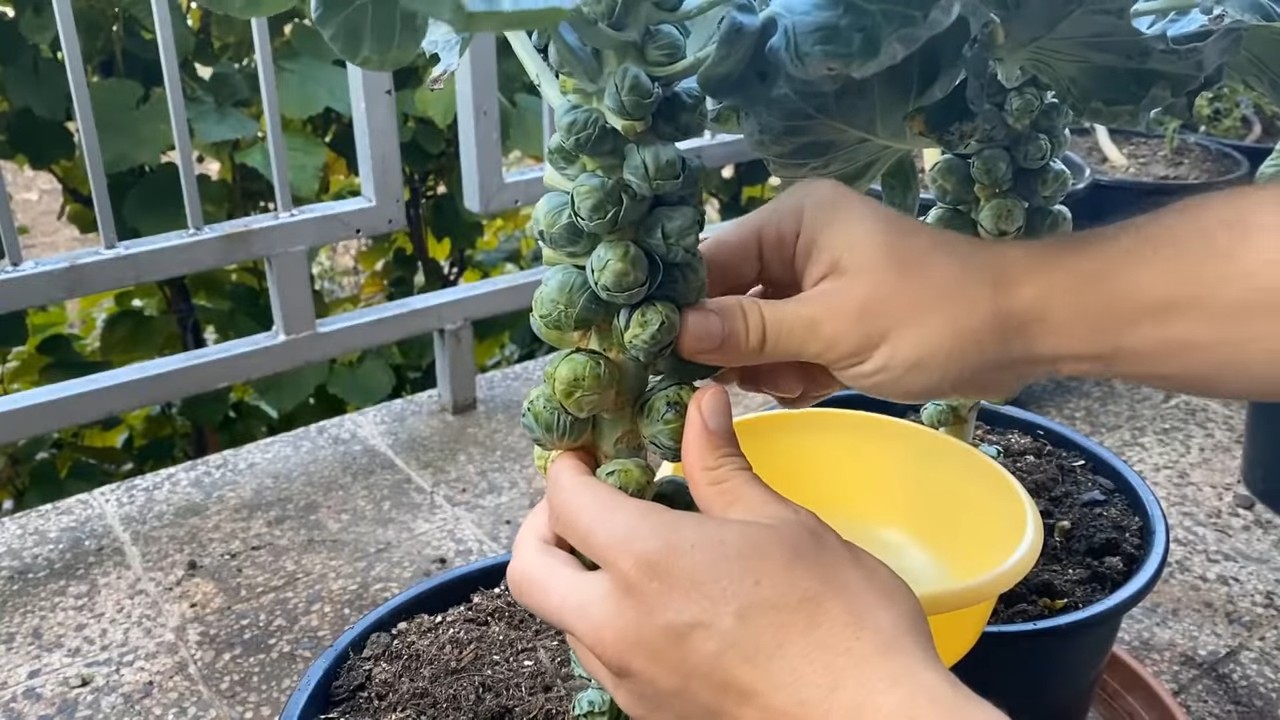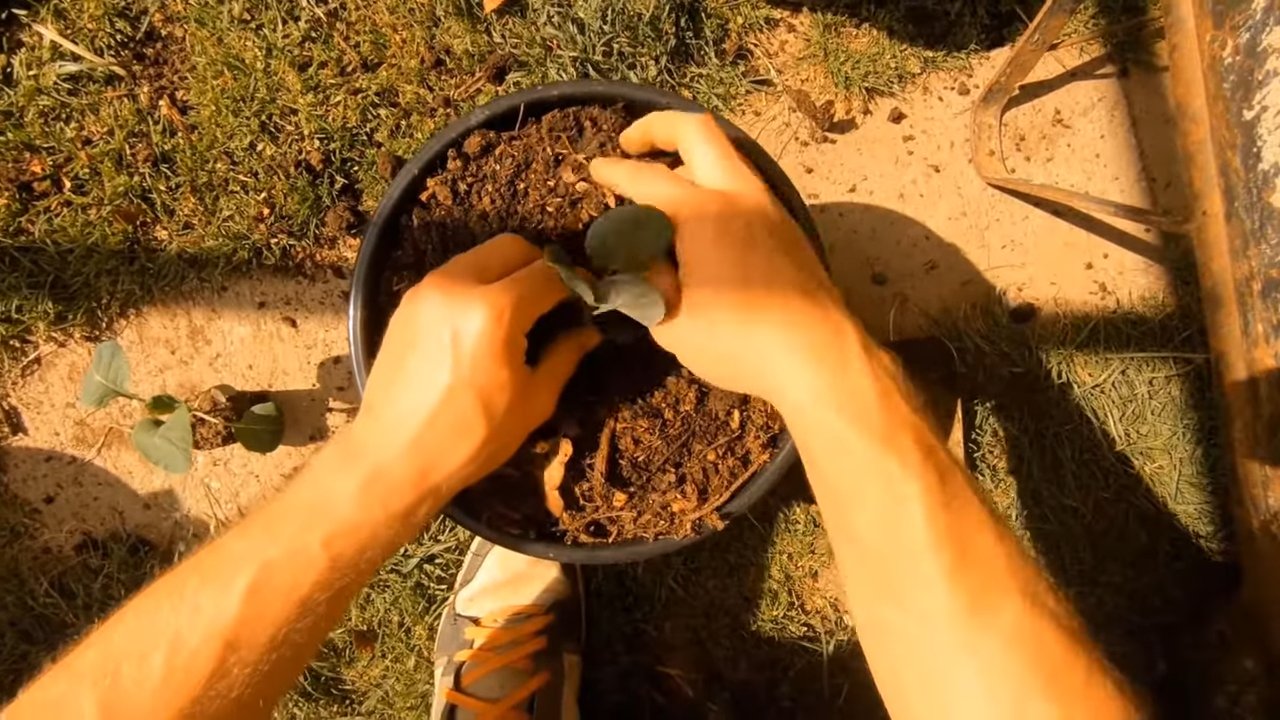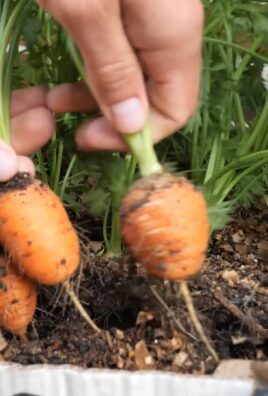Container Brussels Sprouts: Ever dreamed of harvesting your own tiny cabbages right from your patio? I know I have! There’s something incredibly satisfying about growing your own food, and Brussels sprouts, with their unique flavor and nutritional punch, are a fantastic choice. But let’s be honest, the thought of cultivating these little guys can seem daunting, especially if you’re short on space.
For centuries, Brussels sprouts have been a staple in European cuisine, particularly in Belgium (hence the name!). They were first cultivated in the 13th century, and their popularity has only grown since then. But you don’t need a sprawling farm to enjoy fresh, homegrown Brussels sprouts. That’s where the magic of container gardening comes in!
This DIY guide is your secret weapon to successfully growing container Brussels sprouts, even if you’re a complete beginner. We’ll break down everything you need to know, from choosing the right container and soil to providing the perfect amount of sunlight and water. Imagine the satisfaction of serving up a delicious, homegrown side dish that you nurtured from seed to table. Plus, growing your own vegetables is a fantastic way to reduce your carbon footprint and connect with nature. So, let’s ditch the grocery store sprouts and embark on this exciting gardening adventure together!

Growing Brussels Sprouts in Containers: A DIY Guide
Hey there, fellow gardening enthusiasts! Ever thought about growing Brussels sprouts but felt intimidated by their reputation for being tricky? Well, I’m here to tell you that you can absolutely cultivate these mini cabbages right in your own backyard, even if you’re short on space. Container gardening is the answer! I’ve had great success growing Brussels sprouts in containers, and I’m excited to share my secrets with you. Let’s dive in!
Choosing the Right Container and Soil
First things first, you’ll need to select the perfect home for your Brussels sprouts. And trust me, the right container and soil make all the difference.
* Container Size: Brussels sprouts need room to grow, both above and below the soil. I recommend a container that’s at least 12 inches in diameter and 12 inches deep. A 5-gallon bucket works well, but bigger is generally better. The larger the container, the more stable the moisture levels will be, and the more room the roots will have to spread out.
* Drainage: Excellent drainage is crucial. Brussels sprouts hate sitting in soggy soil. Make sure your container has plenty of drainage holes at the bottom. If not, you can drill some yourself.
* Material: Plastic, terracotta, or even fabric pots will work. I personally prefer plastic because they retain moisture better than terracotta, which can dry out quickly, especially in hot weather. Fabric pots are great for aeration, but they might require more frequent watering.
* Soil: Forget garden soil! It’s too heavy and compacts easily, which can suffocate the roots. Instead, opt for a high-quality potting mix. Look for a mix that’s well-draining and contains ingredients like peat moss, perlite, and vermiculite. You can also amend your potting mix with compost for added nutrients. I like to add a slow-release fertilizer to the mix as well to give my sprouts a good start.
Selecting Your Brussels Sprouts Variety
Not all Brussels sprouts are created equal! Some varieties are better suited for container growing than others.
* Consider Size: Look for compact or dwarf varieties. These are bred to stay smaller, making them ideal for containers. Some popular choices include ‘Jade Cross,’ ‘Long Island Improved,’ and ‘Dwarf Rosette.’
* Days to Maturity: Pay attention to the “days to maturity” listed on the seed packet or plant label. This tells you how long it will take for the sprouts to be ready for harvest. Choose a variety that fits your growing season.
* Disease Resistance: Opt for varieties that are resistant to common Brussels sprouts diseases, such as clubroot and downy mildew. This will save you a lot of headaches down the road.
Planting Your Brussels Sprouts
Now for the fun part – getting those little sprouts into their new home!
1. Start with Seedlings: While you can start Brussels sprouts from seed, I find it easier to buy seedlings from a local nursery. This gives you a head start and ensures you’re planting healthy, vigorous plants.
2. Timing is Key: Brussels sprouts are a cool-season crop, so plant them in early spring or late summer for a fall harvest. In my area, I aim to plant seedlings about 6-8 weeks before the first expected frost.
3. Prepare the Container: Fill your container with the potting mix, leaving a few inches of space at the top.
4. Planting Depth: Gently remove the seedlings from their nursery pots and plant them at the same depth they were growing in before. Don’t bury the stem too deep, as this can lead to rot.
5. Spacing: If you’re planting multiple Brussels sprouts in the same container, space them at least 12 inches apart. This will give them enough room to grow without crowding each other.
6. Water Thoroughly: After planting, water the seedlings thoroughly until water drains out of the bottom of the container. This will help settle the soil and get the roots off to a good start.
Caring for Your Container Brussels Sprouts
Once your Brussels sprouts are planted, it’s time to provide them with the care they need to thrive.
* Sunlight: Brussels sprouts need at least 6 hours of sunlight per day. Place your container in a sunny location where it will receive plenty of direct sunlight. If you don’t have a sunny spot, you can supplement with grow lights.
* Watering: Water regularly, especially during hot, dry weather. The soil should be consistently moist, but not soggy. Check the soil moisture by sticking your finger into the soil. If the top inch feels dry, it’s time to water.
* Fertilizing: Brussels sprouts are heavy feeders, so they need regular fertilization. I like to use a balanced liquid fertilizer every 2-3 weeks. You can also side-dress with compost or aged manure.
* Support: As your Brussels sprouts grow taller, they may need support to prevent them from toppling over. You can use stakes or a tomato cage to provide support.
* Pest Control: Keep an eye out for common Brussels sprouts pests, such as aphids, cabbage worms, and flea beetles. You can control these pests with insecticidal soap, neem oil, or by hand-picking them off the plants. I prefer organic methods whenever possible.
* Weed Control: Keep the container free of weeds. Weeds compete with your Brussels sprouts for nutrients and water.
Harvesting Your Brussels Sprouts
The moment you’ve been waiting for – harvesting your homegrown Brussels sprouts!
1. Timing: Brussels sprouts are typically ready for harvest in the fall, after a few light frosts. The sprouts should be firm and about 1-2 inches in diameter.
2. Harvesting Technique: Start harvesting from the bottom of the plant, working your way up. Twist the sprouts off the stem, or use a sharp knife to cut them off.
3. Continued Harvest: You can continue harvesting Brussels sprouts throughout the fall and winter, as long as the weather remains mild. The flavor of the sprouts actually improves after a frost.
4. Removing the Top: Once you’ve harvested most of the sprouts, you can remove the top of the plant to encourage the remaining sprouts to mature more quickly.
Troubleshooting Common Problems
Even with the best care, you might encounter some problems along the way. Here are a few common issues and how to address them:
* Yellowing Leaves: This could be a sign of overwatering, underwatering, or nutrient deficiency. Check the soil moisture and adjust your watering accordingly. Fertilize with a balanced fertilizer to address nutrient deficiencies.
* Sprouts Not Forming: This could be due to insufficient sunlight, poor soil, or lack of fertilization. Make sure your plants are getting enough sunlight, and amend the soil with compost or fertilizer.
* Pest Infestations: As mentioned earlier, keep an eye out for common pests and take action to control them.
* Clubroot: This is a fungal disease that causes swollen, distorted roots. Prevent clubroot by planting disease-resistant varieties and avoiding planting Brussels sprouts in the same spot year after year.
Extra Tips for Success
Here are a few extra tips to help you grow the best container Brussels sprouts ever:
* Rotate Your Crops: Don’t plant Brussels sprouts in the same container year after year. Rotate your crops to prevent soilborne diseases and nutrient depletion.
* Mulch: Apply a layer of mulch around the base of the plants to help retain moisture and suppress weeds.
* Water in the Morning: Water your Brussels sprouts in the morning to allow the foliage to dry before nightfall. This will help prevent fungal diseases.
* Pinch Off Lower Leaves: As the plants grow, pinch off the lower leaves that are touching the soil. This will improve air circulation and reduce the risk of disease.
* Enjoy Your Harvest! Savor the delicious flavor of your homegrown Brussels sprouts. Roast them, sauté them, or add them to soups and stews.
Growing Brussels sprouts in containers is a rewarding experience. With a little bit of care and attention, you can enjoy a bountiful harvest of these nutritious and delicious vegetables right from your own backyard. Happy gardening!

Conclusion
So, there you have it! Growing container Brussels sprouts is not only achievable, but it’s also a deeply rewarding experience that brings the farm-to-table concept right to your doorstep. Forget those bland, overcooked sprouts of your childhood; imagine the vibrant, nutty flavor of freshly harvested Brussels sprouts, grown with your own two hands. This DIY trick isn’t just about saving money (though that’s a definite perk!); it’s about connecting with your food, understanding its journey, and enjoying the unparalleled taste of homegrown goodness.
We’ve walked you through the process, from selecting the right container and soil to nurturing your sprouts through their growth cycle. You’ve learned how to combat common pests and diseases, and you’re armed with the knowledge to harvest your bounty at its peak. But the real magic happens when you take that leap and start your own container Brussels sprouts adventure.
Think of the possibilities! You could experiment with different varieties of Brussels sprouts. Try growing ‘Long Island Improved’ for a classic flavor, or ‘Redarling’ for a beautiful splash of color in your garden and on your plate. You could also explore companion planting, adding herbs like rosemary or thyme to your container to deter pests and enhance the flavor of your sprouts.
Consider the joy of sharing your homegrown Brussels sprouts with friends and family. Imagine the impressed faces when you tell them you grew these delicious vegetables yourself, right on your patio or balcony. It’s a conversation starter, a source of pride, and a testament to your green thumb.
Don’t be intimidated by the thought of growing your own food. Container gardening is incredibly accessible, even for beginners. With a little patience, attention, and the knowledge you’ve gained from this guide, you’ll be well on your way to enjoying a harvest of fresh, flavorful Brussels sprouts.
We urge you to give this DIY trick a try. Start small, learn as you go, and don’t be afraid to experiment. The rewards are well worth the effort. And most importantly, we want to hear about your experience! Share your photos, tips, and stories with us in the comments below. Let’s build a community of container Brussels sprouts enthusiasts and inspire others to embrace the joy of homegrown food. What are you waiting for? Grab a container, some soil, and some Brussels sprouts seedlings, and let’s get growing!
Frequently Asked Questions (FAQ)
Q: How much sunlight do container Brussels sprouts need?
A: Brussels sprouts thrive in full sun, which means they need at least 6-8 hours of direct sunlight per day. If you don’t have a spot that gets that much sun, you can supplement with grow lights. Insufficient sunlight can lead to leggy plants and smaller, less flavorful sprouts. Observe your plants throughout the day to ensure they are receiving adequate sunlight. If you notice them stretching towards the light, it’s a sign they need more.
Q: What is the best type of container for growing Brussels sprouts?
A: Choose a container that is at least 12 inches in diameter and 12 inches deep. Brussels sprouts have a relatively large root system, so they need ample space to grow. A larger container, around 18-24 inches in diameter, is even better, especially if you plan to grow multiple plants in the same container. Make sure the container has drainage holes to prevent waterlogging, which can lead to root rot. Terracotta pots, plastic containers, and even repurposed buckets can work well, as long as they meet these requirements.
Q: What kind of soil should I use for container Brussels sprouts?
A: Use a well-draining potting mix that is rich in organic matter. Avoid using garden soil, as it can be too heavy and compact in containers. A good potting mix will retain moisture while still allowing for proper drainage. You can also amend your potting mix with compost or other organic materials to provide additional nutrients. Look for a potting mix specifically formulated for vegetables, or create your own by mixing equal parts peat moss, perlite, and compost.
Q: How often should I water my container Brussels sprouts?
A: Water your Brussels sprouts regularly, especially during hot, dry weather. The soil should be kept consistently moist, but not waterlogged. Check the soil moisture by sticking your finger about an inch into the soil. If it feels dry, it’s time to water. Water deeply, until water drains out of the drainage holes. Avoid watering the foliage, as this can promote fungal diseases. Drip irrigation or soaker hoses can be a good way to water your plants efficiently.
Q: What are some common pests and diseases that affect Brussels sprouts?
A: Common pests include aphids, cabbage worms, and flea beetles. You can control these pests with insecticidal soap, neem oil, or by handpicking them off the plants. Common diseases include clubroot, blackleg, and downy mildew. To prevent these diseases, choose disease-resistant varieties, practice crop rotation, and avoid overhead watering. Ensure good air circulation around your plants to reduce humidity. If you notice signs of disease, remove the affected leaves or plants immediately.
Q: How do I fertilize my container Brussels sprouts?
A: Brussels sprouts are heavy feeders, so they need regular fertilization. Use a balanced fertilizer, such as 10-10-10, or a fertilizer specifically formulated for vegetables. Fertilize every 2-3 weeks, following the instructions on the fertilizer label. You can also amend your soil with compost or other organic materials to provide slow-release nutrients. Avoid over-fertilizing, as this can lead to excessive foliage growth and fewer sprouts.
Q: When are Brussels sprouts ready to harvest?
A: Brussels sprouts are typically ready to harvest 90-100 days after planting. The sprouts should be firm, green, and about 1-2 inches in diameter. Start harvesting from the bottom of the plant, as these sprouts will mature first. Twist or cut the sprouts off the stem, leaving the leaves intact. You can continue harvesting sprouts as they mature up the stem. The flavor of Brussels sprouts improves after a frost, so don’t be afraid to leave them on the plant until after the first frost.
Q: Can I grow Brussels sprouts in containers in the winter?
A: Yes, you can grow Brussels sprouts in containers in the winter, especially in mild climates. Brussels sprouts are cold-hardy and can tolerate temperatures down to freezing. In colder climates, you may need to protect your plants from frost by covering them with a blanket or moving them to a sheltered location. Choose a variety that is known for its cold tolerance. Winter-grown Brussels sprouts often have a sweeter flavor than those grown in the summer.
Q: Can I grow Brussels sprouts from seed in containers?
A: Yes, you can grow Brussels sprouts from seed in containers. Start the seeds indoors 6-8 weeks before the last frost. Sow the seeds in a seed-starting mix and keep them moist. Once the seedlings have developed a few true leaves, transplant them into your containers. Be sure to harden off the seedlings before transplanting them outdoors. Growing from seed allows you to choose from a wider variety of Brussels sprouts.
Q: What are some good companion plants for Brussels sprouts in containers?
A: Good companion plants for Brussels sprouts include herbs like rosemary, thyme, and sage, which can help deter pests. Marigolds are also effective at repelling nematodes. Other beneficial companion plants include dill, chamomile, and nasturtiums. Avoid planting Brussels sprouts near other members of the cabbage family, such as broccoli, cauliflower, and kale, as they can attract the same pests and diseases. Companion planting can help create a healthier and more productive container garden.




Leave a Comment